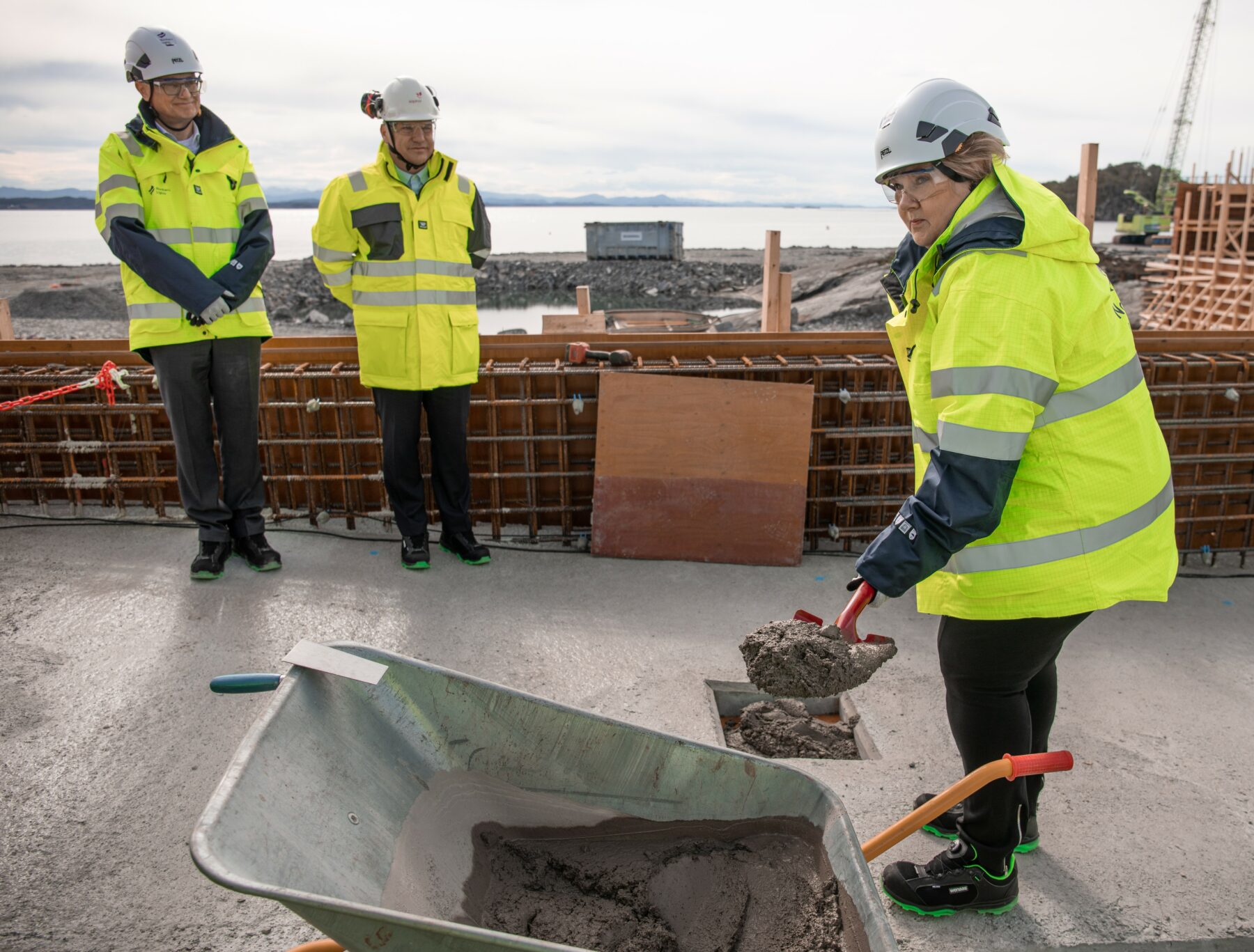Northern Lights announces further investments as Prime Minister Erna Solberg visited the construction site
May 26, 2021

Photo: Ole Jørgen Bratland/Equinor.
Prime Minister Erna Solberg visited the construction site for Northern Lights’ onshore CO2 receiving terminal at Øygarden today, where she laid the foundation stone of the administration building, which will also house a visitors’ centre.
The prime minister was received by Børre Jacobsen, Northern Lights’ managing director. At a breakfast meeting with her, Tom Georg Indrevik, Mayor of Øygarden and Anders Opedal, CEO of Equinor, to discuss the impact of Northern Lights on local value creation, Børre Jacobsen discussed the investment plans.
Northern Lights JV has decided to drill a new offshore CO2 injection well in 2022 and to invest in preparing the Øygarden site for the next phase of the Northern Lights development, a necessary first step towards increasing CO2 storage capacity from 1.5 to 5 million tonnes per year.
Prime Minister Erna Solberg said, “With Longship, we are at the forefront of developing carbon capture and storage in Norway. And hopefully our European neighbours will also use the CO2 storage facilities on the Norwegian shelf. This foundation stone is physical evidence that the Longship project is on track so far. You have reason to be proud”.
Børre Jacobsen said, “I am really pleased to see the construction underway here in Øygarden. Northern Lights is the first step in the development of a new industry needed to deliver on the Paris accord. We are developing the world’s first open-source CO2 transport and storage infrastructure. The additional investments announced today demonstrate our strong commitment and our intention to build this industry step by step, which will enable economic value creation and protect jobs in Norway and Europe”.
The Northern Lights joint venture is owned by Equinor, Shell and TotalEnergies. Equinor is responsible for the Øygarden construction works on behalf of the joint venture. Equinor CEO Anders Opedal attended the event and used the opportunity to thank the site construction staff. “It feels great to be on a construction site like this. Many thanks to those of you who work here. You should be proud, this is just the beginning”.
The facilities will be operational in 2024. Captured CO2 will then be transported by ship to the Øygarden facility before being transported 100 kilometres offshore for injection and permanent storage 2,600 metres below the seabed of the North Sea.

